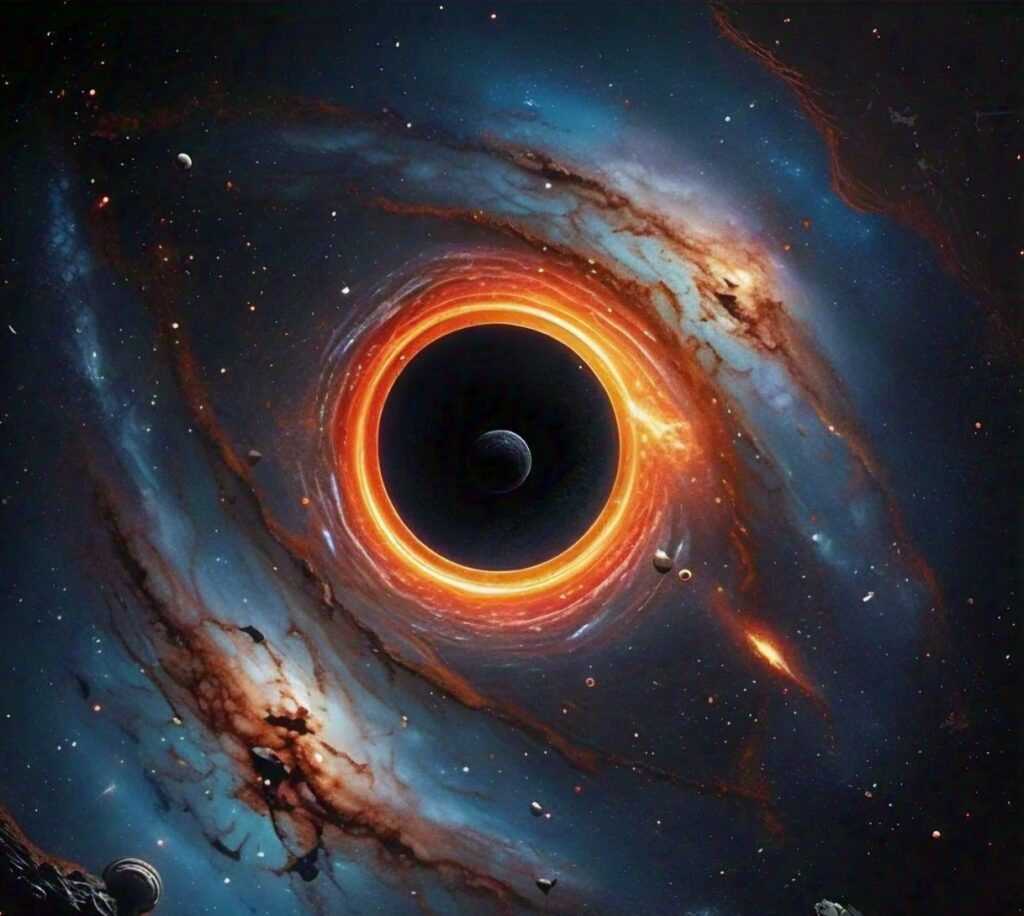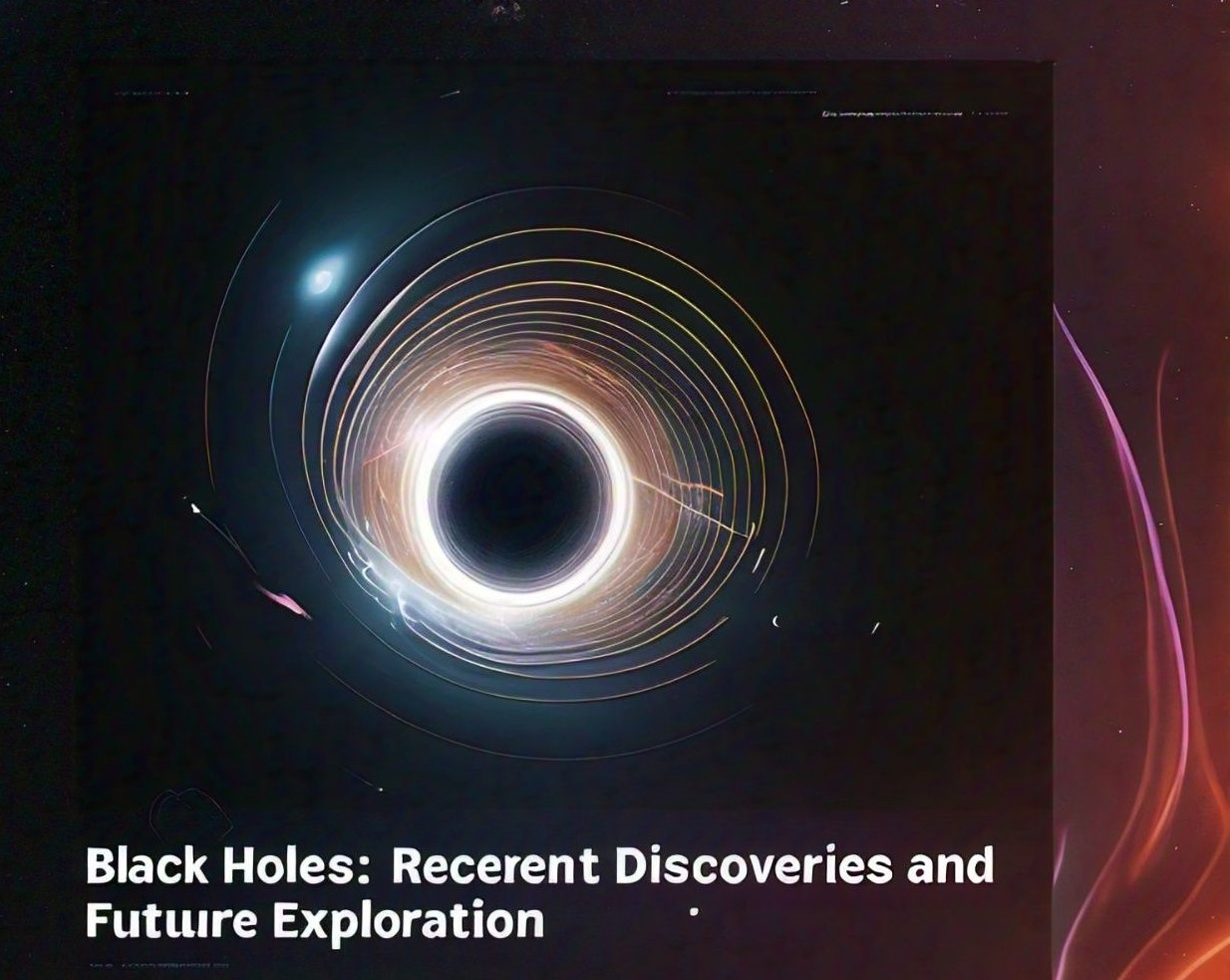Discover the secrets of black holes! Explore the latest scientific breakthroughs, mysterious phenomena, and future plans for unravelling the universe’s darkest wonders. Dive in to learn more
Black holes, one of the universe’s most intriguing and mysterious phenomena, continue to captivate scientists and space enthusiasts alike. What secrets do black holes hold, and how have scientists come closer to understanding them? In this article, we’ll delve into the latest discoveries about black holes and explore what future exploration might uncover.

1. The Enigma of Black Holes: A Quick Recap
What Are Black Holes?
Black holes are regions in space where gravity is so strong that nothing, not even light, can escape. They form when massive stars collapse under their own gravity, creating a dense singularity. Surrounded by an event horizon a point of no return they warp space and time, producing phenomena predicted by Einstein’s relativity. Scientists study black holes to uncover their role in galaxies and the deeper mysteries of the universe.
Why Do We Study Black Holes?
- Understanding the Universe: Black holes are a fundamental aspect of the universe, and studying them helps us better understand the cosmos.
- Gravitational Physics: Black holes are the most extreme gravitational objects in the universe, allowing scientists to test and refine theories of gravity.
- Cosmic History: Black holes are thought to have played a key role in the formation and evolution of galaxies, making them important for understanding cosmic history.
- Astronomical Observations: Studying black holes helps scientists improve their understanding of astronomical observations, such as the behaviour of stars and gas near black holes.
- Advancements in Technology: Researching black holes drives innovation in technologies like telescopes, detectors, and computational methods.
- Insights into Quantum Mechanics: The study of black holes has led to important insights into the nature of quantum mechanics and the behaviour of matter in extreme environments.
- Potential for New Energy Sources: Some theories suggest that black holes could be used as a source of clean energy, making their study relevant to future energy needs.
- Expanding Human Knowledge: Studying black holes expands our understanding of the universe, pushing the boundaries of human knowledge and inspiring new generations of scientists and explorers.
2. Recent Ground-breaking Discoveries
First Image of a Black Hole (2019)
In 2019, the Event Horizon Telescope (EHT) captured the first-ever image of a black hole, located in the galaxy M87. This groundbreaking achievement provided visual proof of black holes’ existence and their event horizons, confirming decades of theoretical predictions. The image, showing a bright ring surrounding a dark center, represented light bending around the black hole, showcasing Einstein’s general relativity in action. This moment marked a pivotal milestone, transforming black holes from theoretical objects into observable phenomena.
Inside the Mystery of Black Hole Mergers
Observations of gravitational waves ripples in space-time have revealed black holes merging with one another. Detected by observatories like LIGO and Virgo, these events provide valuable insights into black hole properties, such as their mass, spin, and origins. These mergers help scientists better understand how black holes interact and contribute to the formation of larger structures in the universe. Such studies also deepen our knowledge of extreme physics and the dynamics of cosmic collisions.
Exploring the Mysteries of Black Hole Jets
Recent observations have revealed powerful jets of energy and matter being ejected from some black holes. These jets, moving at nearly the speed of light, are believed to result from the interaction between the black hole’s intense magnetic fields and the surrounding accretion disk. Studying these jets helps scientists understand how black holes affect their environments, influencing star formation and galaxy evolution over vast distances.
The Puzzle of Supermassive Black Holes
One of the biggest questions in astrophysics is how supermassive black holes millions or billions of times the Sun’s mass—formed so quickly in the early universe. Recent theories suggest they could grow rapidly by consuming large amounts of gas, merging with other black holes, or forming from direct collapse in dense regions of the early universe. Observations from advanced telescopes like the James Webb Space Telescope are helping to refine these theories, offering new clues about the evolution of the cosmos.
3. Future Exploration: What’s Next?
The James Webb Space Telescope: A New Era of Discovery
The James Webb Space Telescope (JWST) is often referred to as the successor to the Hubble Space Telescope, and for good reason. Launched in December 2021, JWST promises to revolutionize our understanding of black holes and the cosmos as a whole. One of its primary goals is to look deeper into the universe than ever before, using its incredible infrared capabilities.
Why does infrared matter?
Well, black holes and the objects surrounding them, like stars and galaxies, often emit light in wavelengths that are difficult to detect with regular telescopes. JWST’s infrared vision allows it to peer through cosmic dust clouds and study the most distant galaxies, many of which harbour supermassive black holes at their centres. JWST’s advanced instruments will help scientists study how black holes grow, how they shape their host galaxies, and how they influence the overall evolution of the universe. Imagine being able to look at the very first galaxies that formed after the Big Bang JWST is on the front lines of this effort, potentially uncovering new insights into the formation of black holes in the early universe.
New Missions and Advanced Observatories: Peering Even Further into the Unknown
While the James Webb Space Telescope is making waves, it’s not the only tool that will help us unlock the secrets of black holes. There are a number of upcoming space missions and advanced observatories that will expand our knowledge even further.
For example, NASA’s Nancy Grace Roman Space Telescope is set to launch in the mid-2020s. It will focus on studying the mysterious dark energy and will also conduct a deep survey of black holes across the universe. With its wide field of view, it could discover and study a range of black holes, including those in distant galaxies, adding more data to help us understand how these cosmic giants grow and interact with their environments.
In addition to that, there are projects like LISA (Laser Interferometer Space Antenna), a space-based gravitational wave detector scheduled for launch in the 2030s. LISA will be able to detect the ripples in spacetime created by massive black holes merging, offering scientists a whole new way to study black holes and their cosmic interactions. These future missions are all about improving our ability to look deeper into the universe and gather more data, revealing new mysteries along the way.
The Role of Artificial Intelligence: Unveiling the Mysteries with Speed and Precision
As exciting as all these missions and telescopes are, there’s another game-changer in the mix: artificial intelligence (AI). AI and machine learning are revolutionizing how scientists process and analyse the vast amounts of data collected from black hole research.
Think about it: the data we get from space observatories is enormous millions of images, signals, and patterns. For humans to analyze all this manually would be nearly impossible. But AI can sift through it all at lightning speed, identifying patterns that may have gone unnoticed and predicting phenomena that we haven’t even thought to look for.
One prime example is the analysis of gravitational waves from black hole mergers. AI systems are already being trained to identify and analyze these ripples in spacetime much faster and more accurately than traditional methods. It’s a bit like having a super-sleuth that can catch the tiniest clues hidden in a sea of data. As these AI tools evolve, they will not only help scientists analyze data more efficiently but also make sense of the more complex behaviours of black holes, providing new insights into their nature and how they affect their surroundings.
4. The Philosophical and Existential Questions
What Do Black Holes Mean for Our Understanding of Reality?
Black holes challenge everything we know about space, time, and gravity. Their intense gravity bends spacetime to such extremes that our current physics can’t fully explain what happens inside them. This mystery might reveal clues to unifying quantum mechanics and general relativity, and could even hint at the existence of other dimensions or alternate realities. Black holes may be more than cosmic peculiarity
they might be windows to understanding a deeper, hidden layer of reality.
Conclusion
Black holes remain one of the greatest mysteries in the universe, and our understanding of them is evolving rapidly. Recent discoveries, such as the first image of a black hole and the detection of gravitational waves, have opened new doors to exploring the hidden nature of these cosmic giants. As future missions like the James Webb Space Telescope and advancements in AI continue to unlock new insights, we are one step closer to uncovering the secrets of black holes. The more we explore, the deeper we dive into understanding the universe’s fundamental truths.
Here are 10 FAQs related specifically to “Black Holes: Recent Discoveries and Future Exploration”:
Are We Closer to Understanding the Universe’s Origin?
Studying black holes could help answer some of the universe’s biggest questions. Some scientists believe they may hold secrets about the Big Bang and the early universe, possibly offering clues about how galaxies and stars formed. Black holes could also shed light on the universe’s ultimate fate—whether it will expand forever, collapse, or undergo something entirely unexpected. In exploring these cosmic giants, we may uncover answers about the universe’s past, present, and future.
What exactly is a black hole?
- A black hole is a region in space where gravity is so strong that nothing, not even light, can escape it.
How are black holes formed?
- Black holes typically form from the collapse of massive stars that run out of fuel and can no longer support their own gravity.
What was the significance of the first black hole image?
- The first black hole image, captured by the Event Horizon Telescope in 2019, was a groundbreaking moment in astronomy, offering direct visual evidence of a black hole’s existence.
What are gravitational waves, and how do they relate to black holes?
- Gravitational waves are ripples in spacetime caused by massive objects like black holes merging. These waves were first detected in 2015 and have provided valuable insights into black hole interactions.
Can we see inside a black hole?
- No, we cannot see inside a black hole because light cannot escape past the event horizon. However, scientists study the effects of black holes on nearby matter and light to understand them better.
What is the James Webb Space Telescope’s role in black hole research?
- JWST’s infrared capabilities allow it to study distant black holes, galaxies, and stars, providing new insights into how black holes grow and shape their environments.
What is the future of black hole research?
- Future missions, like the Nancy Grace Roman Space Telescope and LISA, along with advancements in AI, will continue to help scientists study black holes more efficiently and uncover new mysteries.
Could black holes help us understand other dimensions?
- Some theories suggest that the extreme gravity of black holes may offer a glimpse into other dimensions or parallel universes, though this remains speculative.
Are black holes dangerous to Earth?
- No, black holes are far too distant from Earth to pose any threat. The closest known black hole is thousands of light-years away.
What are the philosophical implications of black holes?
- Black holes challenge our understanding of reality, space, and time, prompting deep philosophical questions about the nature of the universe and our place in it.
for more information chat with ChatGPT


1 thought on “Secrets of Black Holes: Recent Discoveries and Future Exploration”